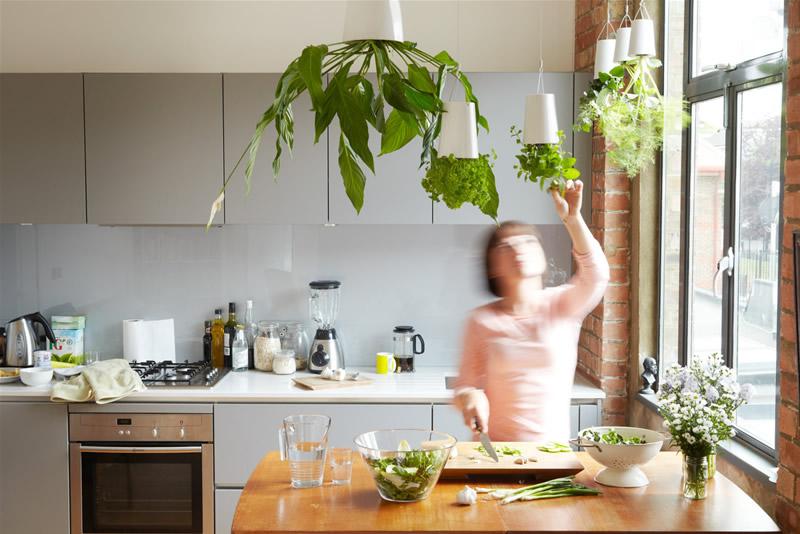In today’s rapidly changing world, the call for sustainable living has never been more urgent, and the kitchen stands at the forefront of this transformation. As the heart of the home, it is a space where not only meals are prepared but also where choices are made that can significantly impact the environment. From energy consumption to food waste, the kitchen is a microcosm of our broader lifestyle habits. In this article, we will explore essential tips for transforming your kitchen into an eco-friendly haven. By integrating sustainable practices into your cooking and food storage routines, you can help reduce your carbon footprint, conserve water, and promote a healthier planet. Whether you are an avid cook or a busy parent, making conscious choices in your kitchen can lead to meaningful change. Join us as we delve into practical strategies that will empower you to create a more sustainable kitchen, all while enhancing the joy of cooking and sharing meals with loved ones.
Table of Contents
- Embracing Sustainable Materials for Kitchen Renovation
- Energy Efficiency: Upgrading Appliances for a Greener Kitchen
- Waste Management Strategies: Composting and Recycling Solutions
- Mindful Cooking Practices: Reducing Food Waste and Choosing Local Ingredients
- Insights and Conclusions
Embracing Sustainable Materials for Kitchen Renovation

In your kitchen renovation, choosing sustainable materials is not just an eco-friendly decision but a statement of intention towards responsible living. Consider bamboo countertops or reclaimed wood cabinetry; both options offer durability while being environmentally friendly. Bamboo grows quickly and absorbs more carbon dioxide than traditional hardwoods, making it a renewable resource. Reclaimed wood, on the other hand, adds unique character to your space and reduces waste by giving a second life to discarded materials. Pair these with low-VOC (volatile organic compounds) paints that minimize harmful emissions, creating a healthier atmosphere for your home.
In terms of flooring, options like cork or linoleum provide sustainable alternatives to conventional materials. Cork is harvested from the bark of cork oak trees without cutting them down, ensuring the tree continues to thrive. Linoleum is made from natural ingredients such as linseed oil and wood flour, promoting a biodegradable solution at the end of its lifecycle. When selecting appliances, look for Energy Star rated products that consume less energy, reducing your carbon footprint while also lowering utility bills. By thoughtfully integrating these materials into your kitchen design, you can achieve a space that is both stylish and sustainable.
Energy Efficiency: Upgrading Appliances for a Greener Kitchen

Upgrading to energy-efficient appliances is one of the most effective ways to create a greener kitchen. When choosing new appliances, look for the Energy Star label, which signifies that they meet strict energy efficiency guidelines set by the U.S. Environmental Protection Agency. These appliances not only use less energy but often come with advanced technology that enhances their performance. For instance, modern dishwashers can use as little as 3 gallons of water per cycle, far less than older models that could use up to 12 gallons. Consider the following benefits when making your upgrades:
- Reduced Energy Bills: Lower energy consumption translates into noticeable savings on monthly bills.
- Long-term Durability: Energy-efficient models are often built with superior materials, ensuring a longer lifespan.
- Improved Performance: Newer appliances often come with advanced features that enhance usability.
In addition to energy-efficient appliances, consider other upgrades that contribute to a sustainable kitchen. Installing smart technology such as programmable thermostats for ovens or timers for your refrigerator can greatly enhance energy management. Also, using LED lighting instead of traditional bulbs not only reduces energy consumption but also improves the ambiance of your kitchen. Here’s a quick comparison of energy usage:
| Appliance | Old Model (Approx. kWh/year) | Energy-Efficient Model (Approx. kWh/year) | Annual Savings (kWh) |
|---|---|---|---|
| Refrigerator | 800 | 400 | 400 |
| Dishwasher | 500 | 300 | 200 |
| Oven | 400 | 250 | 150 |
Waste Management Strategies: Composting and Recycling Solutions
Transforming your kitchen into an eco-friendly haven begins with effective waste management strategies like composting and recycling. Composting is an excellent way to minimize food waste while enriching your garden. You can create your own compost bin using kitchen scraps such as vegetable peels, eggshells, and coffee grounds. By adding these organic materials to your compost pile, you’re not only reducing landfill waste but also promoting soil health. Consider following these simple steps for successful composting:
- Choose a suitable compost bin or pile location.
- Layer greens (nitrogen-rich) and browns (carbon-rich) materials.
- Maintain moisture and aerate the compost regularly.
- Monitor the temperature for optimal breakdown of materials.
In addition to composting, recycling plays a crucial role in minimizing waste. Setting up a dedicated recycling station in your kitchen can streamline your efforts and encourage the whole family to participate. Collect recyclables like paper, cardboard, glass, and plastics in clearly labeled bins. To ensure effective recycling, familiarize yourself with your local recycling guidelines and adapt your practices accordingly. Below is a helpful reference for common recyclable materials:
| Material Type | Recyclable? | Notes |
|---|---|---|
| Plastic Bottles | Yes | Rinse before recycling |
| Pizza Boxes | No | If greasy or soiled |
| Aluminum Cans | Yes | Crush to save space |
| Glass Jars | Yes | Remove lids and rinse |
Mindful Cooking Practices: Reducing Food Waste and Choosing Local Ingredients
Embracing a mindful approach to cooking not only enhances your culinary experience but also significantly reduces food waste. One excellent practice is to plan your meals for the week ahead. This strategy allows you to buy only what you need, minimizing excess ingredients that might languish in your fridge. Additionally, consider using every part of your ingredients, such as vegetable scraps and stems, which can be transformed into flavorful stocks or compost. By adopting these habits, you cultivate a deeper appreciation for food, while also contributing to a sustainable kitchen environment.
Another essential aspect of eco-friendly cooking is sourcing local ingredients. When you choose to buy from local farms and markets, you support your community and reduce the carbon footprint associated with long-distance food transportation. Look for seasonal produce to ensure freshness and better flavor, while also helping the environment. To facilitate your shopping, here’s a simple comparison table of the benefits of local versus imported ingredients:
| Aspect | Local Ingredients | Imported Ingredients |
|---|---|---|
| Freshness | Often harvested the same day | May be weeks old |
| Flavor | Richer and more vibrant | May lack depth |
| Environmental Impact | Lower carbon footprint | Higher transportation emissions |
| Support for Local Economy | Boosts local farmers | Funds distant producers |
Insights and Conclusions
As we conclude our exploration into transforming your kitchen for eco-friendly living, it becomes clear that small changes can lead to significant impacts. The journey toward sustainability is not merely about adopting new habits; it encompasses a holistic approach that prioritizes the health of our planet while enhancing our daily lives. By embracing energy-efficient appliances, reducing waste through thoughtful meal planning, and choosing sustainable materials, you are taking important strides toward a greener future.
Moreover, cultivating a conscious kitchen reflects a commitment to not only personal well-being but also to the broader community and environment. As you integrate these essential tips into your culinary space, remember that each decision sends ripples of positive change throughout your household and beyond. Together, we can create kitchens that not only nourish our bodies but also respect and preserve the precious resources of our Earth. Let this guide serve as a stepping stone on your path to eco-conscious living, inspiring you to continually seek innovative ways to harmonize your lifestyle with sustainable practices. Embrace the challenge, and enjoy the transformation—both in your kitchen and in the wider world.



